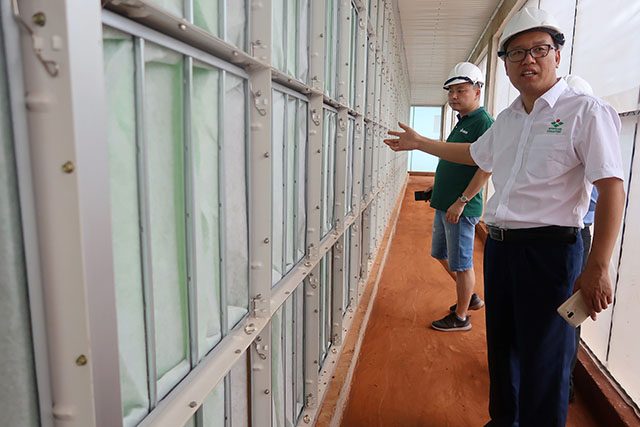
SEOUL — An extensive, rapid slaughter of hogs to control an outbreak of African swine fever has sparked concern over whether South Korea is prepared to dispose of the culled animal, as reports emerged this week a river was contaminated by pig blood.
Authorities have slaughtered about 380,000 pigs since the outbreak was reported in September to contain the disease, all in a northern region bordering North Korea.
That is about 3% of the country’s pig herd, for a total of 14 confirmed swine-fever cases. No new case has been found since Oct. 10.
Authorities had yet to find the right balance in the response to livestock disease outbreaks, despite repeated experiences in the past, said Woo Hee-jong, veterinary professor at Seoul National University.
They may have “excessively culled pigs to keep the virus from spreading to the southern part where many pig farms are located”, Woo said.
Authorities have been rounding up hogs from larger surrounding outbreaks than required, and at times wiping out the herd in an entire region.
Slaughtered animals are buried, with protective plastic laid inside the pit to prevent the seepage of fluid from carcasses.
But this week, media reported said a stream off the Imjin river in Yeoncheon county was contaminated with blood that leaked from 40,000 pigs slaughtered in the region and piled up on land and on trucks awaiting burial.
“There may be other reasons too, but this happened because it was handled in a short time,” said Lee Seok-woo, head of Yeoncheon Imjin River Civic Network, which first reported the contamination.
Lee said residents of the area had raised safety concerns as the Imjin river was a source of water.
Pigs diverted at last minute
The government has stepped in to stop any contaminated water from flowing downstream by setting up dikes and conducted tests, which did not show blood had contaminated the water, the agriculture ministry said on Thursday.
The ministry also said it had buried the hogs and would check all sites where they were buried to make sure of no leaks.
A ministry official said the delay in burial was because of an additional 10,000 hogs were unexpectedly diverted for burial in addition to the 30,000 originally planned.
The 10,000 pigs had been initially lined up for a process called rendering, which involves disposing of carcasses by grinding and treating them in high heat, to be used as manure.
“There aren’t many rendering plants, and residents near the plants had complained so we had to bury another 10,000 pigs and that has caused a delay,” the official said.
South Korea normally buries pigs or other animals infected with disease but rendering has also been used.
Since South Korea’s first outbreak of the deadly hog disease in mid-September, it has gone to great lengths to contain the spread of the viral disease, from raising the alert level to the highest and ordering soldiers to shot wild boars.
African swine fever is highly contagious for pigs, with no effective vaccine. The virus has spread across China and other Asian countries including Vietnam and the Philippines.
Questions about safety was raised in the Philippines where dead pigs were reported floating in a river and creeks in Manila, likely dumped by hog farmers.
In China, where culling of 1.2 million pigs has been reported officially but the herd has shrunk by roughly 175 million since a year ago, there have been reports of dead pigs deserted in the open or in rivers.
Lee from the Yeoncheon civic group warned that the coming winter may mean more problems, with the possibility of bird flu and foot-and-mouth disease, all at the same time.—Reporting by Jane Chung; additional reporting by Khanh Vu in Hanoi, Dominique Patton in Beijing and Enrico dela Cruz in Manila Editing by Jack Kim









